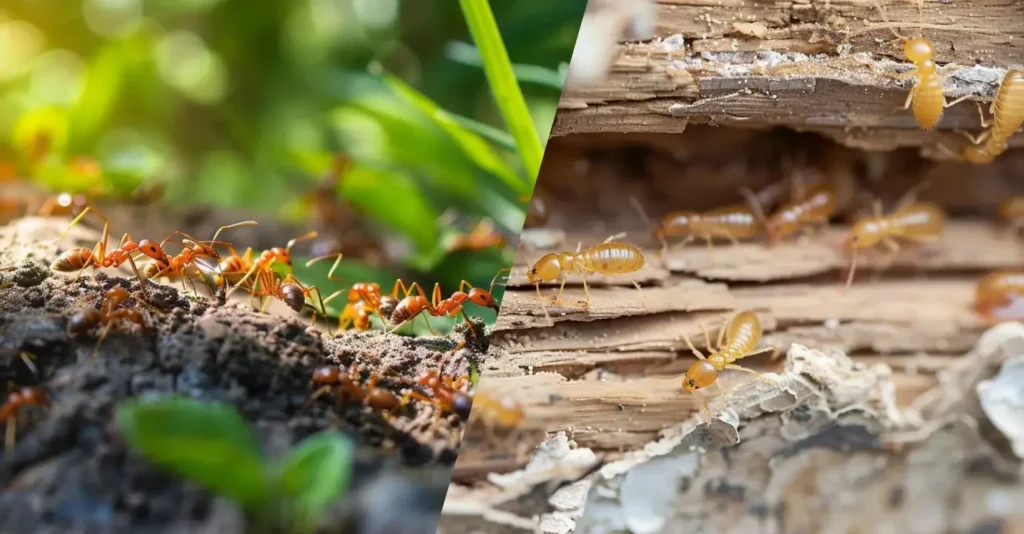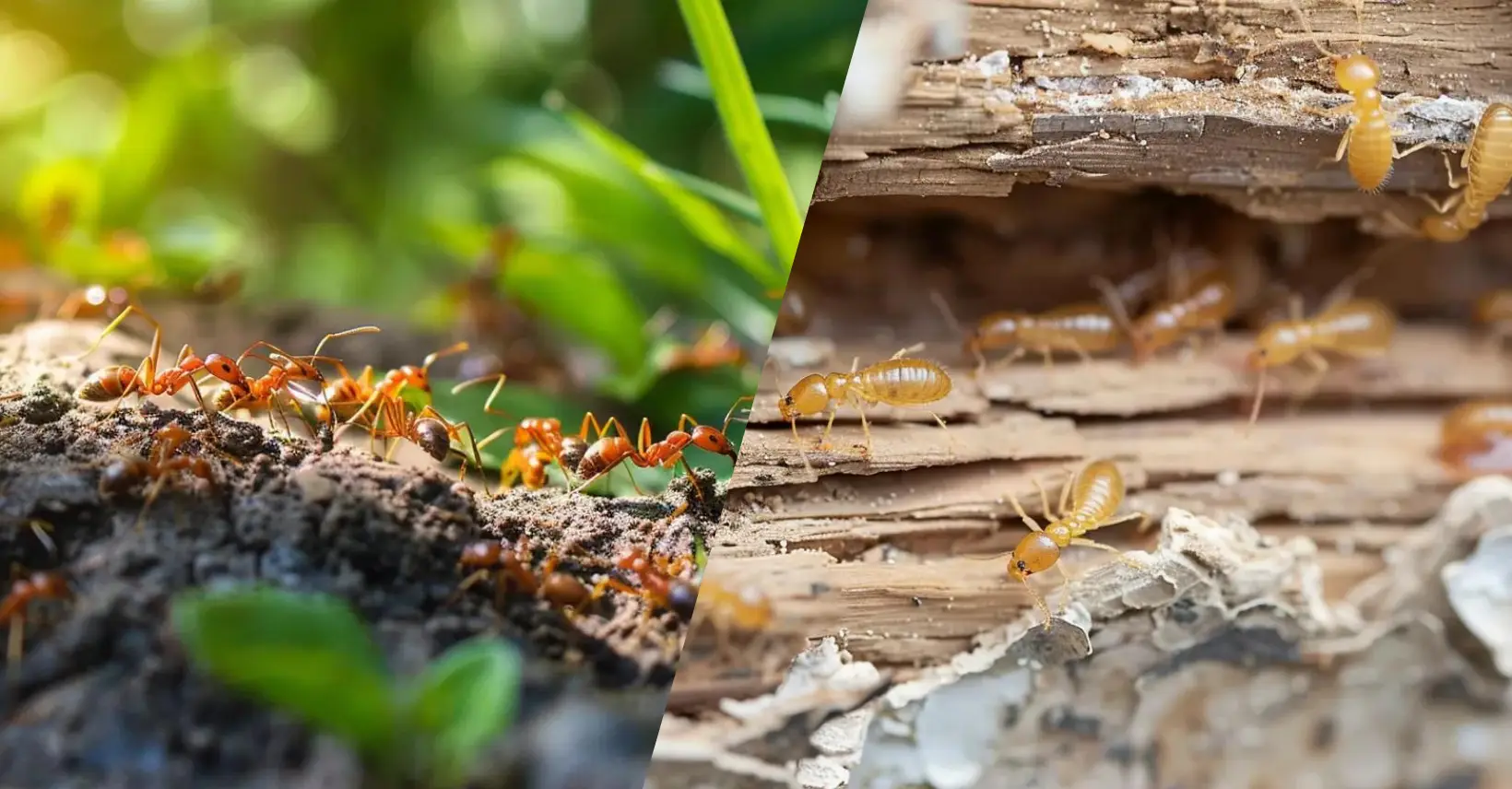
Englewood residents know that each season brings its own unique challenges, and pest activity is no exception. From spring’s emerging insects to winter’s shelter-seeking rodents, understanding which pests are most active throughout the year can help you stay one step ahead of infestations. As temperatures shift and weather patterns change, different pests become more aggressive in their search for food, water, and shelter—often finding exactly what they need in and around your home.
This guide breaks down the most common seasonal pests you’re likely to encounter in Englewood and explains why timing your pest management efforts can make all the difference in protecting your property year-round.
Spring Awakeners: Ants and Termites
As winter ends and temperatures begin to rise, Englewood homeowners often notice increased ant activity around their properties. Spring is prime time for ant colonies to expand, with worker ants emerging to establish new foraging trails that can lead directly to your kitchen, pantry, or pet food areas.
Carpenter ants are particularly concerning during spring months. Unlike other ant species that simply search for crumbs, carpenter ants burrow into wooden structures to build their nests. They’re attracted to moisture-damaged wood, making areas around windows, doors, and basements especially vulnerable. Early spring activity may seem minor, but carpenter ant colonies can cause significant structural damage if left unchecked. Professional ant control services can identify and eliminate these colonies before they compromise your home’s structure.
Termites also become active in spring, with swarming season typically occurring between March and May in New Jersey. Subterranean termites are the most common species in Englewood, and their mud tubes along foundation walls or wooden beams are often the first sign of trouble. A single termite colony can consume cellulose material 24 hours a day, making early detection and professional termite control essential for preventing costly damage.
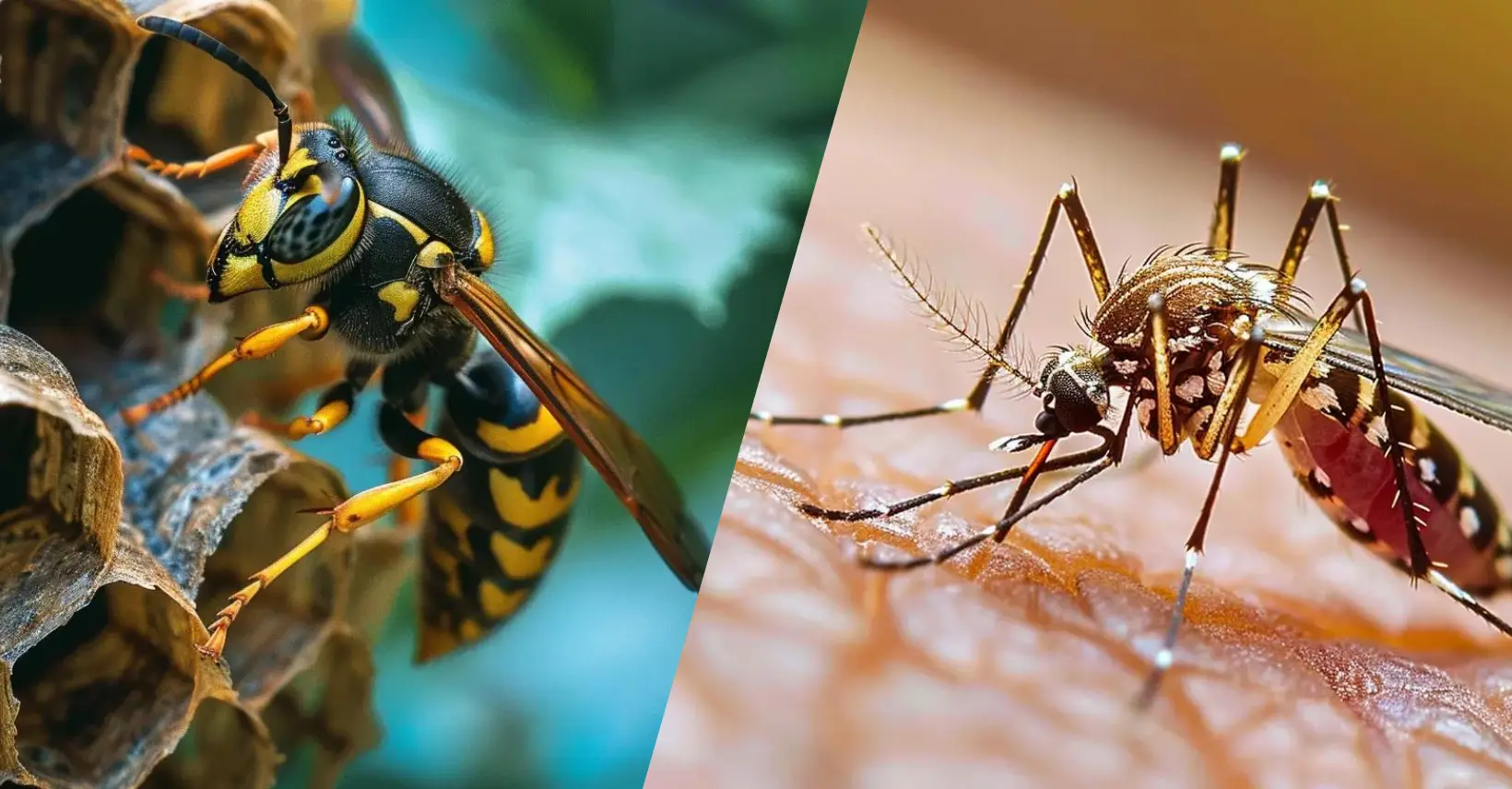
Summer Surge: Wasps, Hornets, and Mosquitoes
Summer brings peak activity for some of Englewood’s most aggressive pests. Yellow jackets and paper wasps become increasingly territorial as their colonies reach maximum size, often building nests in eaves, attics, or landscaped areas. Unlike bees, these insects can sting multiple times and become more aggressive when defending their nests, particularly during late summer months.
Bald-faced hornets, despite their name, are actually large wasps that construct distinctive gray, paper-like nests in trees or under building overhangs. Their nests can house several hundred insects, and disturbing them can result in multiple stings from highly defensive hornets. Professional wasp control is essential for safely removing these dangerous nests.
Mosquito populations also peak during summer’s warm, humid conditions. Standing water from clogged gutters, flower pots, or low-lying yard areas provides ideal breeding grounds. Beyond the annoyance of their bites, mosquitoes in New Jersey can carry West Nile virus and other diseases, making professional mosquito control a health priority.
The combination of increased outdoor activities and peak pest populations makes summer a critical time for professional pest management. DIY sprays and traps often provide only temporary relief, while comprehensive treatment plans address breeding sites and long-term prevention.
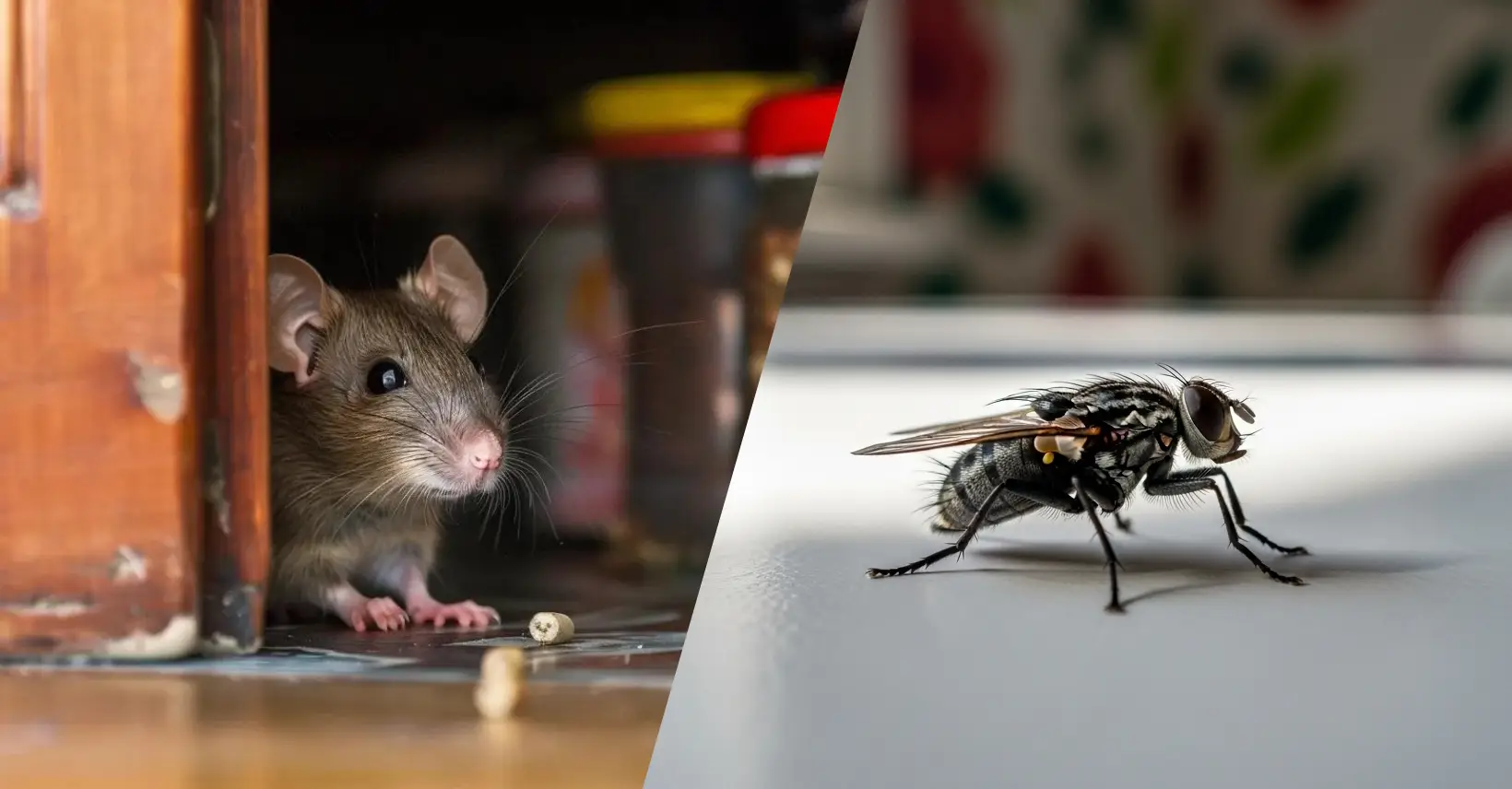
Fall Invasion: Rodents and Cluster Flies
As temperatures drop in fall, Englewood homes become attractive refuges for pests seeking winter shelter. Mice and rats begin their seasonal migration indoors, often entering through surprisingly small openings around foundations, utility lines, or roof areas.
House mice can squeeze through gaps as small as a dime, while Norway rats need openings about the size of a quarter. Once inside, these rodents can multiply rapidly—a single pair of mice can produce up to 10 litters per year. Fall is the ideal time to seal entry points and address attractants before populations establish themselves indoors. Professional rat and mice control services can identify entry points and implement comprehensive exclusion strategies.
Cluster flies also become problematic during fall months. These large, sluggish flies gather in attics, wall voids, or other protected spaces to overwinter. While they don’t pose health risks like house flies, cluster flies can emerge in large numbers during warm winter days, creating significant nuisance issues.
Stink bugs are another fall concern, particularly the invasive brown marmorated stink bug that has become established throughout New Jersey. These shield-shaped insects seek winter shelter in homes and can emerge in large numbers during spring warm-ups, creating both odor and contamination problems.
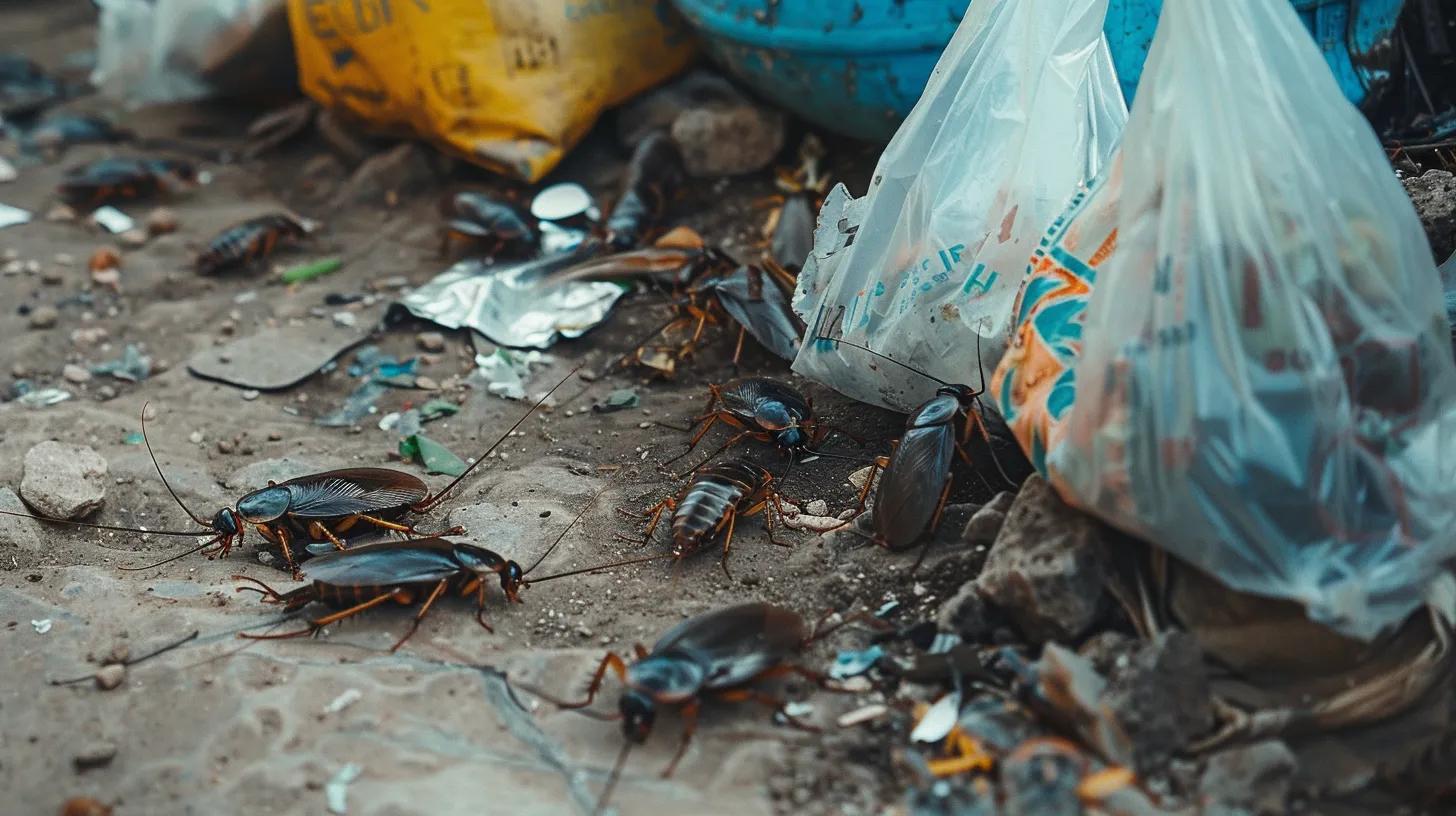
Winter Shelter-Seekers: Cockroaches and Stored Product Pests
While winter slows many pest species, it creates ideal conditions for others. Heated indoor environments allow German cockroaches to remain active year-round, with kitchen and bathroom areas providing the warmth, moisture, and food sources they need to thrive.
German cockroaches are particularly concerning because they reproduce quickly and can spread bacteria, allergens, and pathogens throughout your home. Winter’s closed-up homes can trap these contaminants, potentially affecting indoor air quality and triggering asthma or allergy symptoms. Professional roach control is essential for eliminating these health hazards and preventing reinfestation.
Stored product pests, including Indian meal moths, flour beetles, and grain weevils, also flourish during winter months when homes are sealed and pantries become attractive targets. These pests can infest cereals, pet food, birdseed, and other dry goods, often going unnoticed until populations become well-established.
Why Professional Treatment Makes the Difference

Each season’s pest challenges require different approaches, timing, and expertise to address effectively. Seasonal pest management involves understanding pest life cycles, identifying vulnerable periods, and implementing targeted treatments that provide long-term results rather than temporary fixes.
At Clearview Pest Control, we’ve seen how seasonal pest patterns affect Englewood properties year after year. Our experience shows that proactive, season-specific treatments are far more effective and cost-efficient than reactive approaches that wait until infestations become established. Learn more about our comprehensive approach on our all services page.
Professional pest management also considers the interconnected nature of seasonal pest activity. Spring ant trails can indicate moisture problems that will attract summer wasps. Fall rodent entry points often become next year’s insect highways. Comprehensive seasonal programs address these connections to provide year-round protection.
Protecting Your Englewood Home Throughout the Year
Understanding seasonal pest patterns is the first step in maintaining a pest-free environment, but implementing effective control measures requires specialized knowledge and proper timing. Each species has specific vulnerabilities and treatment windows that maximize results while minimizing environmental impact.
Seasonal pest management isn’t just about addressing current problems—it’s about anticipating future issues and creating barriers that prevent infestations before they start. This approach protects your family’s health, preserves your property values, and provides the peace of mind that comes with comprehensive protection.
To schedule a seasonal pest assessment or learn more about year-round protection plans for your Englewood property, contact Clearview Pest Control. Our team understands the unique pest pressures affecting local homes and can develop a customized program that keeps your property protected through every season. You can also learn more about our service areas and local expertise on our areas we serve page.

